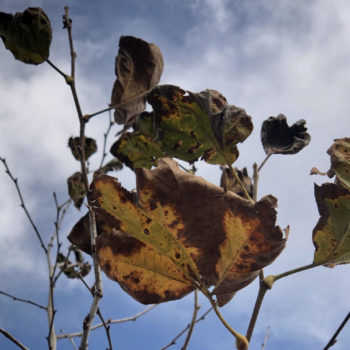 Sorry folks, it’s time to talk about anthracnose again! This repeat offender shows up every year and the best advice we can give you is to treat for it NOW. Plan treatments for late January to early March, before trees start leafing out, and you’ll get the best bang for your plant health care (PHC) buck.
Sorry folks, it’s time to talk about anthracnose again! This repeat offender shows up every year and the best advice we can give you is to treat for it NOW. Plan treatments for late January to early March, before trees start leafing out, and you’ll get the best bang for your plant health care (PHC) buck.
Anthracnose is a topic that keeps coming up simply because anthracnose always comes back. You can treat for it and prune it out and work to contain it, but it never really goes away. Starting with new shoots and young leaves, anthracnose produces yellow and brown spots that get larger and larger until the leaves die and fall off. A classic sign of anthracnose is a sycamore with a skeletal canopy that should be full of leaves.
A single fungal infection is bad enough, but anthracnose is actually the name for a group of fungal diseases that attack trees in similar ways and there are treatments that can slow their effects. The best way to manage anthracnose is through a combination of PHC and selective pruning. Talk to your arborist about the best plan for your infected trees.
Anthracnose thrives and spreads easily during the rainy season. It can be carried to nearby trees through watering and infected tree debris like fallen leaves or mulch. Because anthracnose loves moist conditions it’s critical to make sure trees are in well-draining soil and not overwatered trees. If you remove an infected tree make sure your tree care company contains all the debris and takes it offsite!


